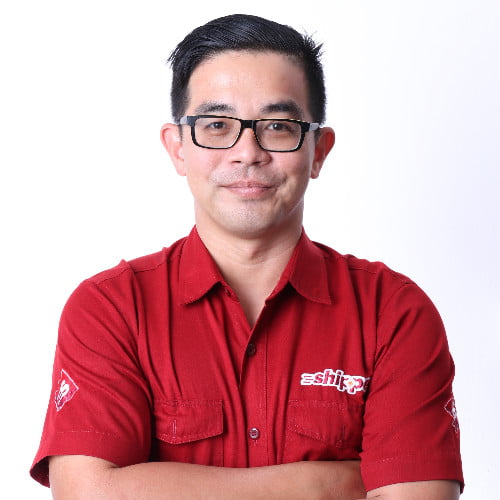It may take a decade to digitalize, but one startup has hit on a catalytic formula to jump-start the critical industry.
ASEAN is home to many start-ups with immense potential and growth, and many address big societal needs. Indonesia’s logistics market is projected to hit US$240 billion by 2021, but despite the large size of the market, shipping is extremely inefficient.
Three major legacy problems at play now include: a confusing plethora of different warehousing & shipping options; lack of price transparency; and below average track-ability. In tier 2 and tier 3 areas, the high cost of shipping basically impedes or discourages e-commerce adoption!
To catalyze change in the country’s shipping conundrum, one startup in Indonesia has ambitious plans using a mixture of technology and peer-to-peer networking. Logistics firm Shipper aims to solve the three major problems using recent seed funding. That begs the questions: How can a long-running national problem be solved via its digitalization platform? What led to these serious shortfalls in such a large logistics market? How did the market become so large if everything was so inefficient?
In an interview with Shipper’s cofounder and COO Budi Handoko, we managed to discern how the problem started. End-to-end logistics cover a pretty wide area of services, from various types of trucking, warehousing, different kinds of delivery services, air cargo, even up to the specific bonded warehouse services. Logistics services are of course present in many sectors of industries. However, when there is a need in a specific logistic supply, there is no one single platform that can detect and relate any excess capacity available around any city easily and efficiently.

Said Handoko: “The easiest way to do logistics, then, will be for each company to set up a logistic arm or facility (trucks, warehouse) for own internal use. This has been happening from the 50s up to the present point, creating a huge excess capacity of warehouses due to lack of information. Software is not commonly used in traditional logistics companies, and the traditional way of running logistics was seen as normal. That has created a lot of inefficiencies in business processes and resource planning.”
The timing seems to be opportune now that the Indonesian government is responding to the pandemic by promoting digitalization, financial inclusion and related projects.
Attacking the problem with unified tech
How will Shipper use technology to reform the Indonesian logistics market, and what are the opposing and competitive efforts by other companies to achieve the same? What kind of governmental support is expected?
“We believe a properly-designed technology platform, coupled with intelligently-used data will create transparency in many sectors of logistics. The logistics industry itself is a giant US$240B industry, with many unorganized segments. It is big enough for multiple companies to build something meaningful. And we are open to partnerships with multiple companies in order to solve the inefficient logistic problems in Indonesia. We are constantly working with government on certain aspects, and we will always be supportive of the government policy.”
With the funding by Europe’s Prosus and China’s TenCent venture, Shipper’s solution tackles the complex problems as follows:
- With more than 2,500 logistics providers in Indonesia (many of whom only cover a small area), fulfilling and tracking orders is a slow and inefficient process. Shipper’s digital platform aims to drastically improve efficiency in fulfilling and tracking orders via digitalized fulfillment centers and a wide network of package pick-up services.
- The platform offers a unified dashboard to help sellers on e-commerce platforms to manage the delivery aspects, empowering sellers to get recommendations on the most efficient logistic services, including first-mile package pick-up and integrated tracking reports.
- The package pick-up service (using gig-economy workers such as people who want flexible, part-time work) collects shipments from several vendors in the same neighborhood and distributes them to different logistics providers, serving as micro-fulfillment hubs. Some 10 to 30 new couriers are engaged each week to handle territories that are at least 2.5 km apart so rivalry and contention matters are controlled.
- To date, shipper has established 10 fulfillment centers across Indonesia, including Jakarta, with plans to open a new one about every two weeks until it covers all of Indonesia.
- The platform also has a technology stack to help logistics providers manage shipments by predicting the best shipping routes and consolidating packages headed for similar destinations.
- Use of the platform’s multi-carrier application programming interface (API) will allow vendors to manage orders, print shipping labels and get tracking information from multiple providers on their smart phones efficiently.
Shipper expects that the logistics industry in Indonesia will remain fragmented for the next decade due to Indonesia’s size and geography, but if their plan for 1,000 micro-hubs within the next year and 15 to 20 fulfillment centers, the improved efficiencies could lead to a stronger national momentum that creates a multiplier effect in terms of digital transformation.
When that happens, Shipper plans to replicate its winning formula across other Southeast Asian countries with rapidly-growing e-commerce markets, including Thailand, Vietnam and the Philippines. In the meantime, due to the current pandemic, the focus has been pulled back squarely to local soil.
Handoko has also pledged to recruit exceptional local talent to inject structure into a huge and very unstructured industry. A consumer-to-consumer service is also supposedly in the pipeline to kick-start peer-to-peer commerce, perhaps similar to what Carousell achieved in Australia, Indonesia, Hong Kong, Malaysia, Singapore and Taiwan… only time will tell.
